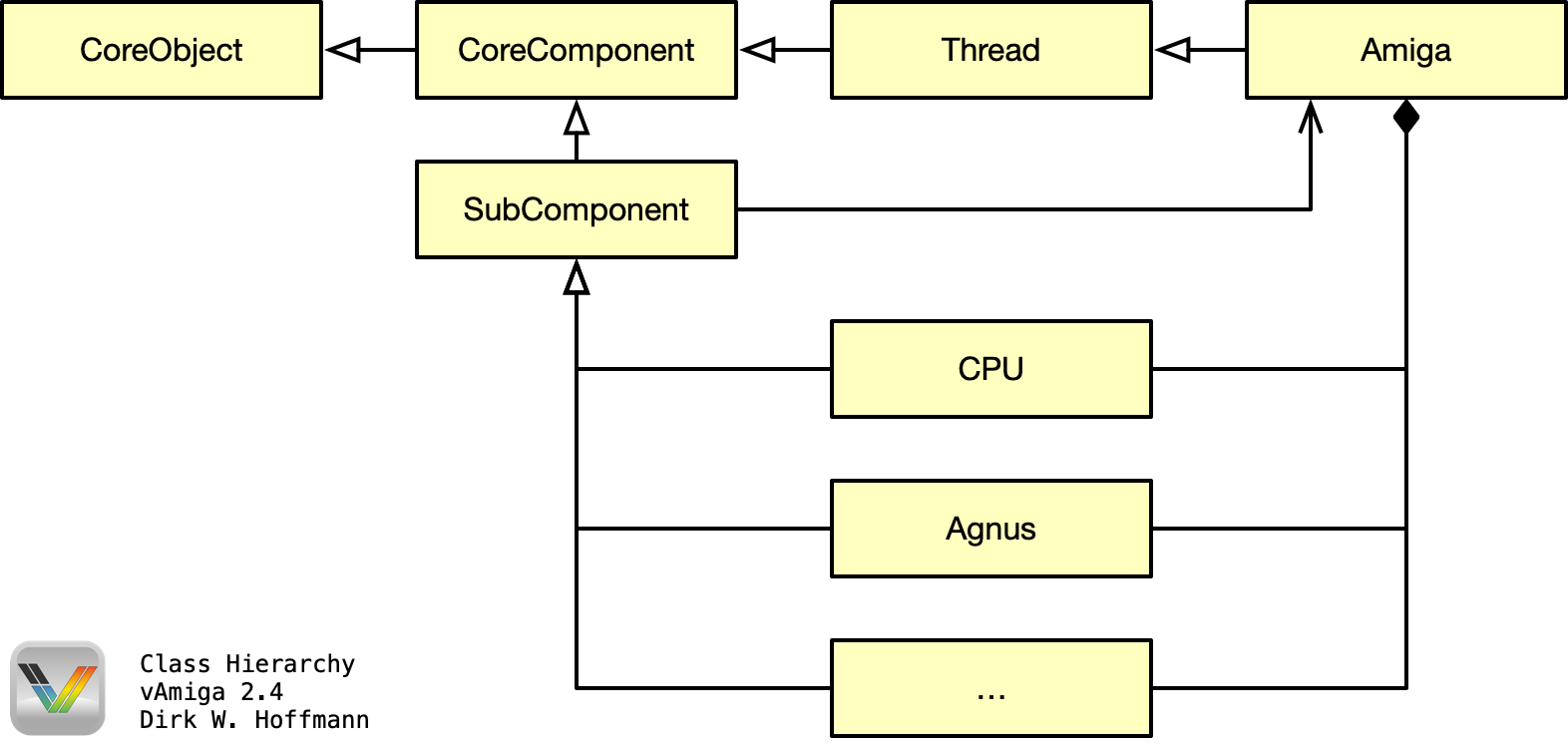The Class Hierarchy¶
This document describes the basic software architecture of vAmiga. The emulator has been written in C++ and is based on the following class hierarchy:

The most prominent class is the Amiga class, as each instance of this class represents a complete virtual Amiga. The class inherits from three other classes:
CoreObjectThis class encapsulates some common functionalities that are useful for most classes in the vAmiga universe. For example, it provides the API functions for printing debug messages.
CoreComponentThis class defines functionalities shared by all classes representing a hardware component. It includes functions to initialize, configure, and serialize objects, as well as functions to power on, power off, run, and pause.
ThreadThis class enables the
Amigaclass to run code in a separate thread. The architecture and functionality of this class is covered in a separate document.
Another important entity is the SubComponent class, which is the ancestor of all, you guessed it, subcomponents of the Amiga. As a rule of thumb, you’ll find a separate class for almost every component you’ll find on the motherboard of a real Amiga. There is a CPU class, a Memory class, and classes for the custom chips Agnus, Denise and Paula. The Blitter and Copper are also encapsulated in individual classes. You’ll find the instances of these classes inside Agnus, just as you would find the logic circuits of these chips inside the Agnus chip in the real machine.
The inner structure of the SubComponent class is very simple, as its main purpose is to make all subcomponents visible to each others. In the class diagram you may have spotted the associated arrow that connects the SubComponent class with the Amiga class:

In the code, the connection is established in the constructor of the SubComponent class:
SubComponent(Amiga& ref);
Inside the constructor, a number of references like the following are set up:
CPU &cpu;
Memory &mem;
Agnus &agnus;
...
The references are available in any subclass of SubComponent and provide easy access to all subcomponents of the virtual Amiga. For example, whenever Agnus needs to block the CPU for a certain number of cycles, it can do so by calling an appropriate API function of the cpu reference:
cpu.addWaitStates(delay);